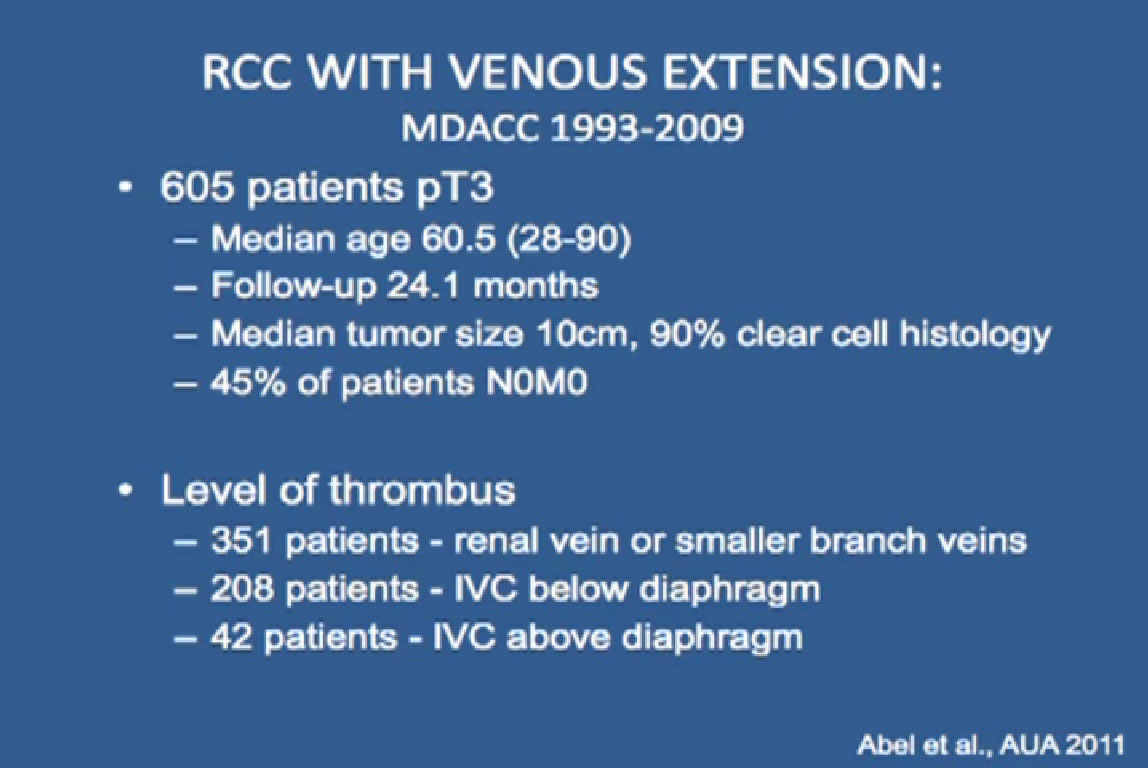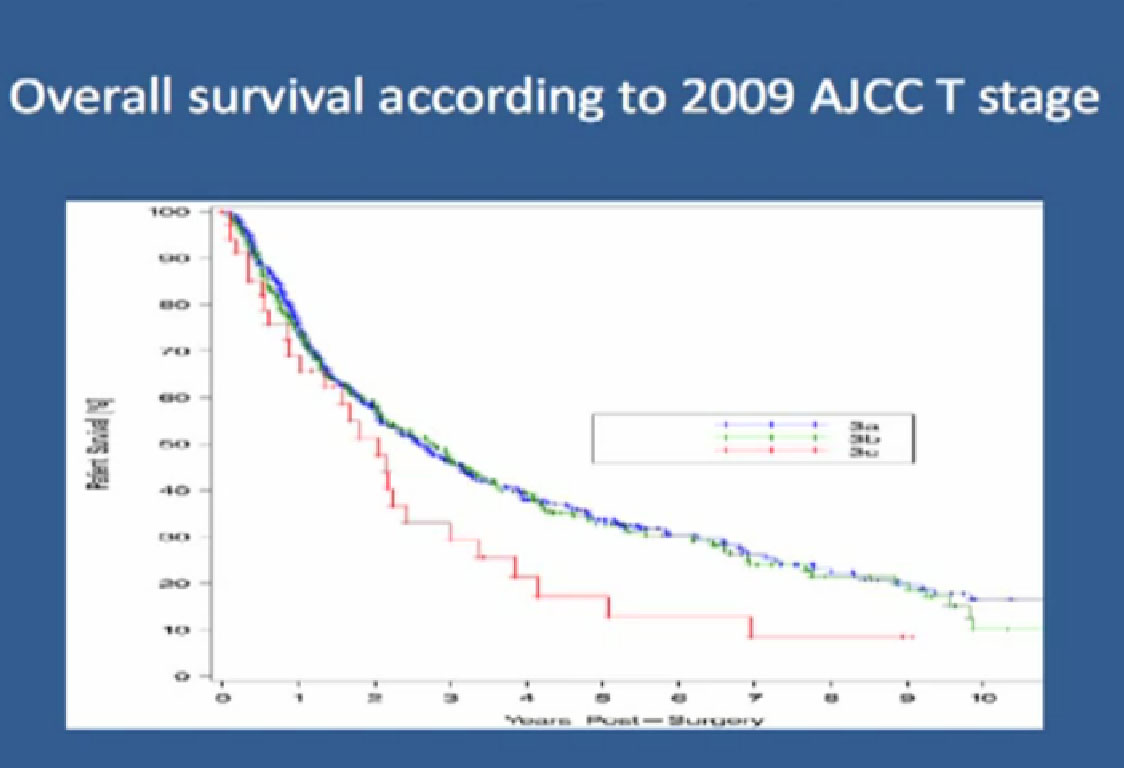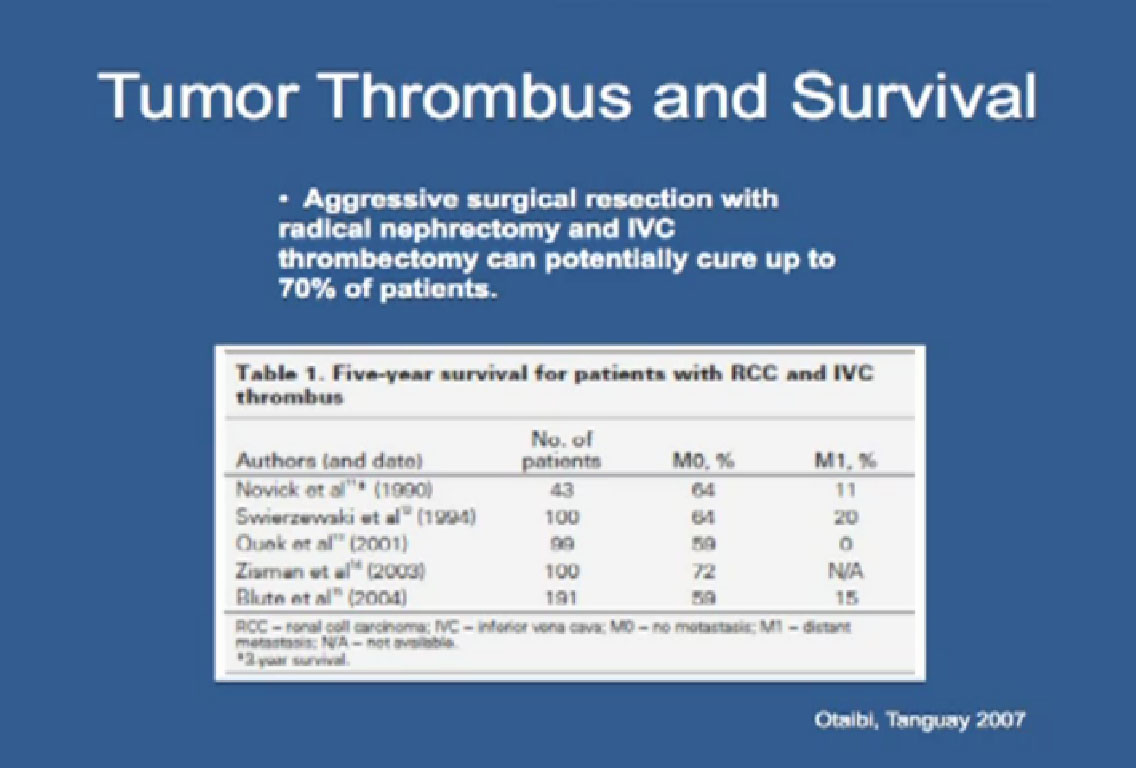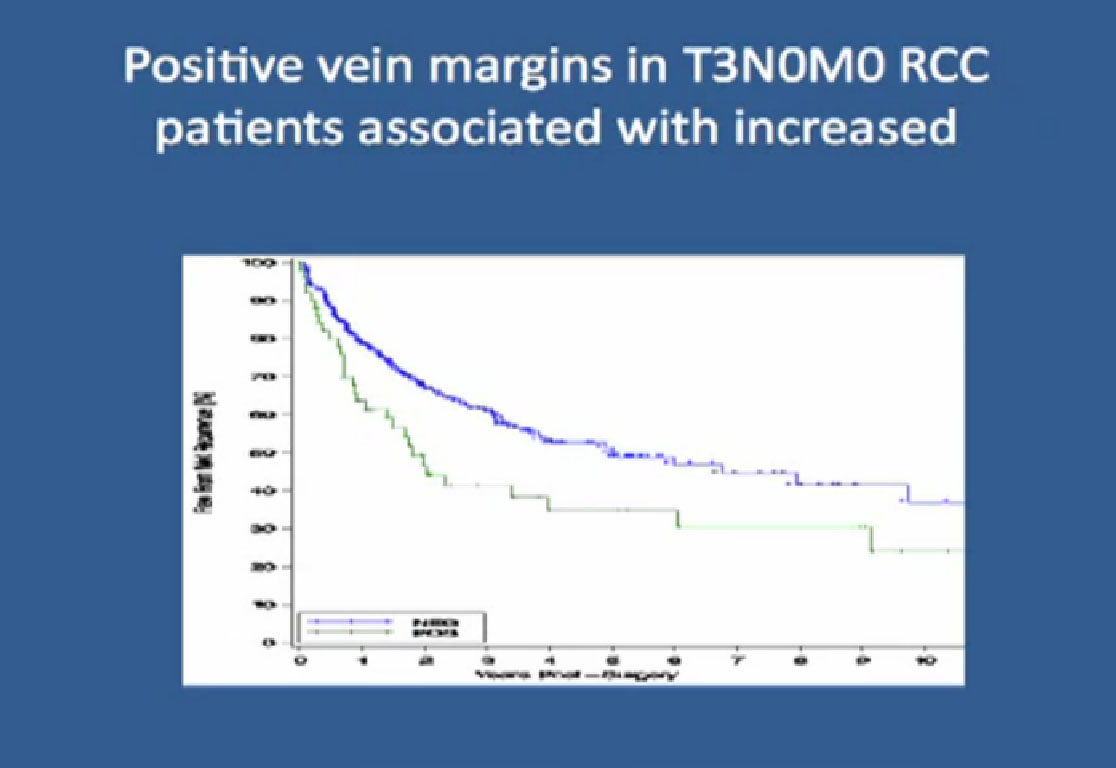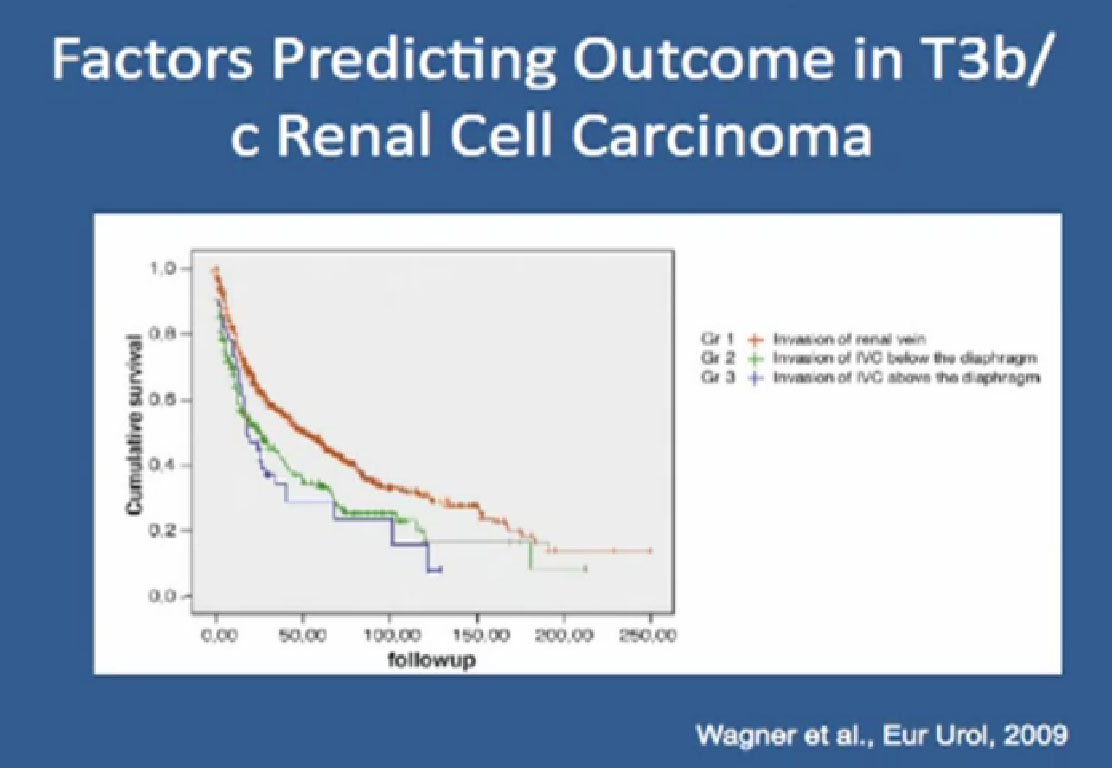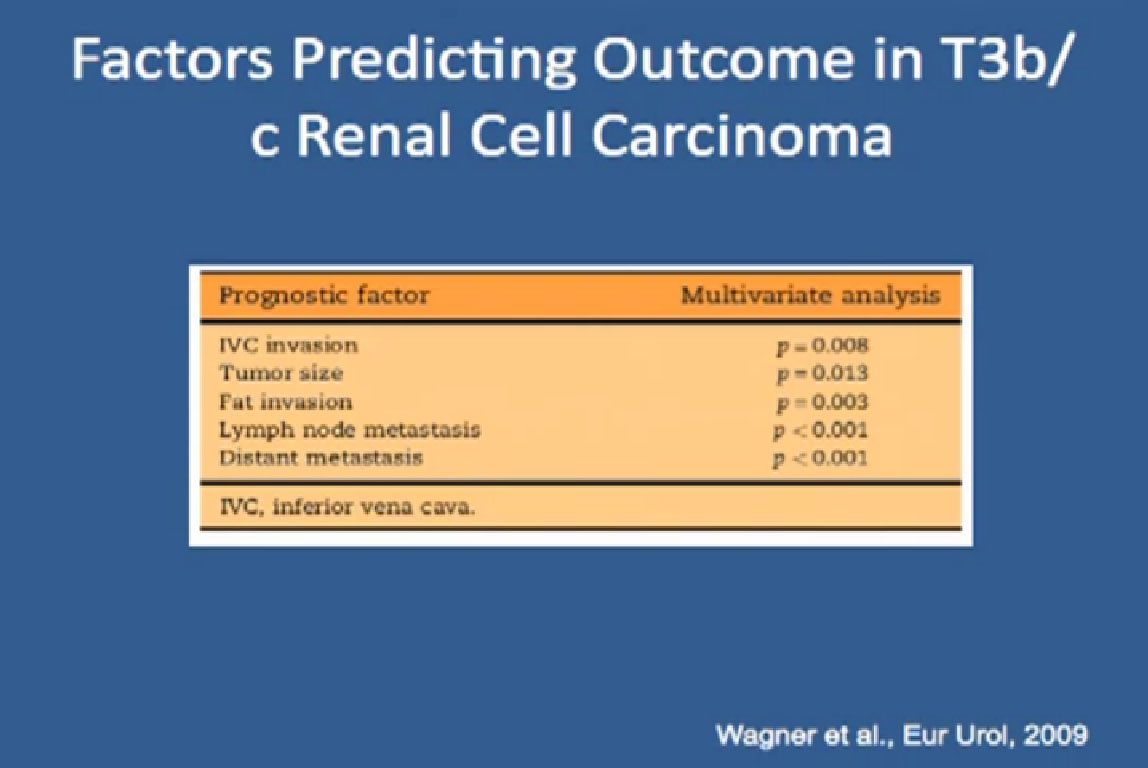Dr. Chris Wood; MD Anderson Cancer Center
KCA Patient Conference; April 14, 2010
Part 2 of 4
Surgical Management of Locally Advanced Renal Cell Carcinoma
Next is the management of more advanced disease, in patients who present with tumor thrombi, nodal metastases, adjacent organ invasion and renal fossa recurrence.
The first is venous tumor thrombi. This is one of the biggest operations that I do, as about 15% present with venous thrombi from their kidney cancer. These can be huge. This can be very complicated, as these thrombi can go up into the heart. We then have to put these patients on by-pass, open up their chests, stop their hearts and put them on a bypass, so we can take the thrombus out. We use TransEsophagealEchocardiogophy to monitor of the thrombus, to make sure that the thrombus does not break off.
This is a series that we recently published at MD Anderson, 605 patients with venous involvement, median age of 60 years, follow up of 24 months. 45% had no evidence of metastatic disease; conversely 55% obviously had advanced disease. The more advanced stage, the higher the risk of metastatic disease.
These are big operations; median blood loss is a liter and length of time is 3 hours, with complications in the first 30 days for 25% of patients. Patients stay in hospital about six days. But even with venous involvement up to the heart, in the absence of metastatic disease, there is a median survival of five years, so even these patients can be cured with surgery alone. But once they demonstrate evidence metastatic disease, survival drops off dramatically.
We looked at a variety of different parameters, won’t bore you with all the details. We looked to see what predictor survival for these patients and this is what we found.
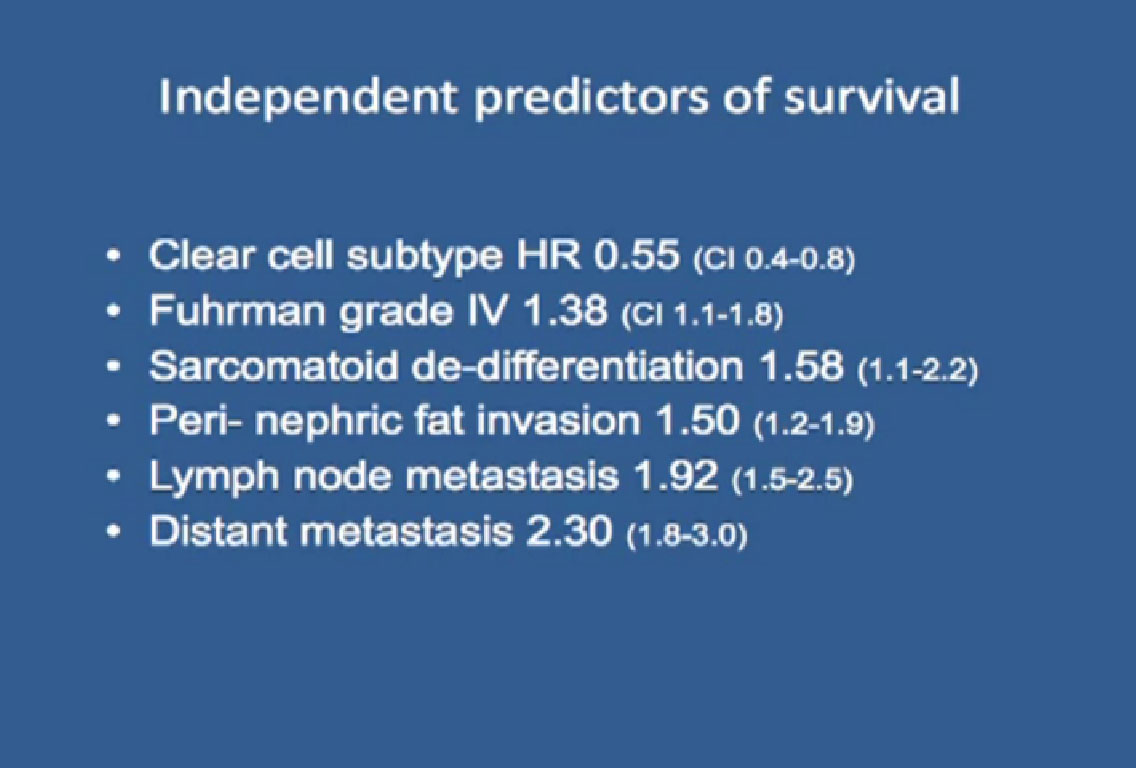 Those patients who had clear cell histology actually had a more favorable outcome than those with non-clear cell. Those who had advanced grade, sarcomatoid de-differentiation, those who had peri-nephrectic fat, nodal metastases, distant metastases, all were associated with a more adverse outcome than patients with venous thrombus involvement.
Those patients who had clear cell histology actually had a more favorable outcome than those with non-clear cell. Those who had advanced grade, sarcomatoid de-differentiation, those who had peri-nephrectic fat, nodal metastases, distant metastases, all were associated with a more adverse outcome than patients with venous thrombus involvement.
Interesting was in our studies, not shown elsewhere in the literature, is that the height of the thrombus in the vena cava did not seem to matter. In other words if it was only in the renal vein, versus in the vena cava and that is at odds with the literature that is out there. It only seemed to matter when it went up into the heart, the red line at the bottom and with that, we saw a decrease in overall survival.
Our series are in concert with others, in regards to survival in the absence of metastatic disease that patients can have a long term durable survival, with about 60% with five year disease-free survival
Microscopic Positive Vein Margins Associated with Increased Local Recurrence & Metastatic Progression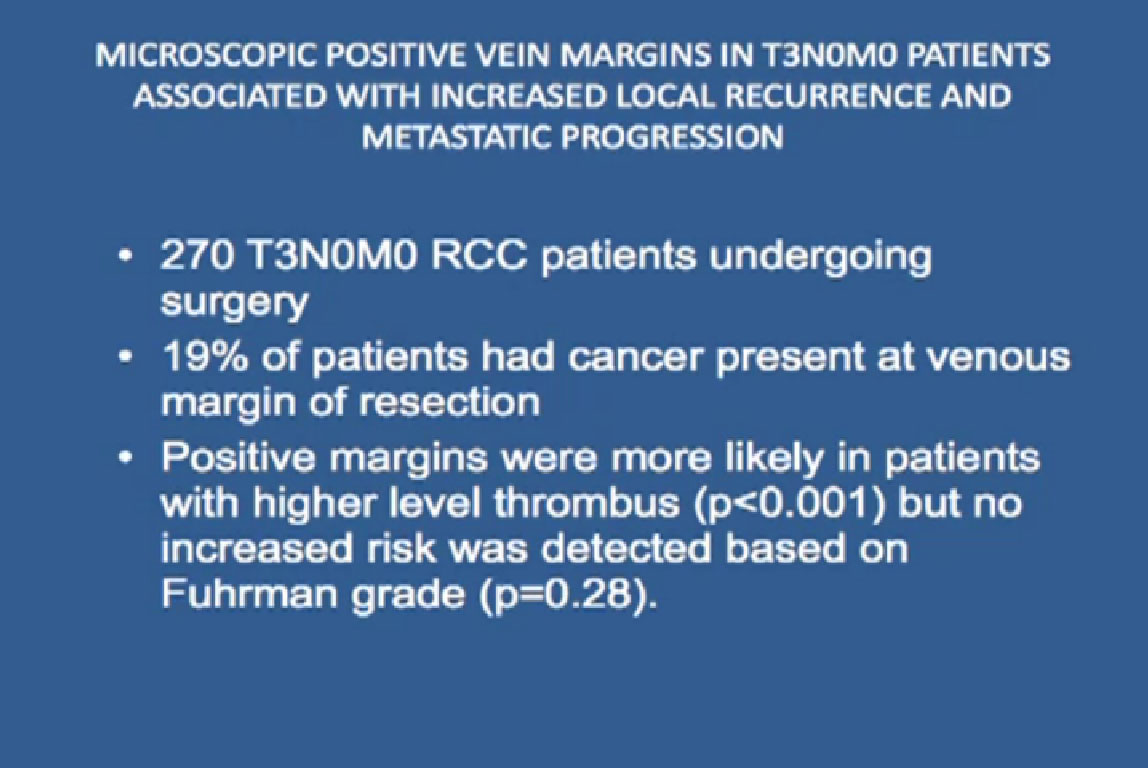
One of the other things we noticed from our series that made me wake up was the concept of the vein margin. Of 270 patients, who had no evidence of metastatic disease, almost 20% of patients had cancer present at the margin of resection. When we resect the vena cava, we are obviously limited in how much we can take, unless we are doing a reconstruction, which is really fraught with complication.
(associated with increased metastatic progression.
But those with a positive margins, meaning they had cancer sitting at the edge of resection, where we cut the vein, had a greater risk of local recurrence, a higher Fuhrman grade. Those patients had a worse outcome, not surprisingly.
So now when we do these surgeries, we send the resection for a frozen section to be sure there is no cancer at the margin. If there is cancer at the margins, then we will do a reconstruction to try to reconstruct the vena cava to try to eliminate all the cancer.
Also in the literature that is out there that is a bit at odd with our series; here they noted that patients who had only renal vein involvement had significantly better outcome than those who had IVC (Inferior Vena Cava) involvement. There is some data that suggests that the height of the tumor in the vein is somehow related to outcome but that is not what we are seeing in our patients.
In this series, IVC (inferior vena cava) wall invasion, tumor size, fat invasion, nodal metastases, and distant metastases all were associated with an adverse outcome in patients with venous tumor thrombi.”
Dr. Wood continues his discussion of surgical management of “Locally Advanced Renal Cell Carcinoma” with Budd-Chiari Syndrome in Part 3.

